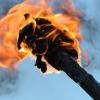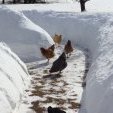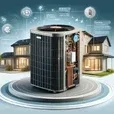All Activity
- Past hour
-

July 2025 Discussion-OBS - seasonable summer variability
LibertyBell replied to wdrag's topic in New York City Metro
wow 4 100+ in July and 99 in August -

July 2025 Discussion-OBS - seasonable summer variability
bluewave replied to wdrag's topic in New York City Metro
That’s why ConEd installed the new network. They were probably noticing stronger cooling demand from those neighborhoods in Queens and wanted to get reliable temperatures there. Since the airports are located right on the water and there is a large area of urban neighborhoods that are located more in the interior of the city. -

July 2025 Discussion-OBS - seasonable summer variability
LibertyBell replied to wdrag's topic in New York City Metro
so still a chance at 90 tomorrow? -
July 2025 Discussion-OBS - seasonable summer variability
SACRUS replied to wdrag's topic in New York City Metro
1988 as a scorcher especially west of the city July 1988 Newark Weather Day High (°F) Low (°F) Precip. (inches) Snow (inches) July 1 73 54 0.00 0.0 July 2 82 59 0.00 0.0 July 3 87 61 0.00 0.0 July 4 87 66 0.00 0.0 July 5 86 69 0.00 0.0 July 6 91 70 0.00 0.0 July 7 92 71 0.00 0.0 July 8 97 73 0.00 0.0 July 9 89 74 0.03 0.0 July 10 100 72 0.00 0.0 July 11 100 78 0.00 0.0 July 12 86 74 0.17 0.0 July 13 89 74 0.00 0.0 July 14 96 70 0.00 0.0 July 15 94 76 0.02 0.0 July 16 101 74 0.12 0.0 July 17 100 73 0.92 0.0 July 18 96 74 0.00 0.0 July 19 90 74 1.10 0.0 July 20 82 74 2.55 0.0 July 21 88 73 1.84 0.0 July 22 80 74 0.03 0.0 July 23 78 71 0.45 0.0 July 24 84 73 0.62 0.0 July 25 90 69 0.00 0.0 July 26 87 70 1.81 0.0 July 27 84 69 0.06 0.0 July 28 87 71 0.26 0.0 July 29 95 73 0.00 0.0 July 30 99 78 0.00 0.0 July 31 90 76 0.00 0.0 August 1988 Newark Weather Day High (°F) Low (°F) Precip. (inches) Snow (inches) August 1 91 76 0.00 0.0 August 2 94 76 0.00 0.0 August 3 93 76 0.00 0.0 August 4 92 77 0.00 0.0 August 5 90 77 0.00 0.0 August 6 90 75 0.00 0.0 August 7 93 77 0.00 0.0 August 8 90 75 0.00 0.0 August 9 92 75 0.00 0.0 August 10 93 76 0.01 0.0 August 11 97 77 0.00 0.0 August 12 95 80 0.00 0.0 August 13 98 79 0.00 0.0 August 14 98 80 0.00 0.0 August 15 99 81 0.00 0.0 August 16 92 74 0.00 0.0 August 17 90 70 0.05 0.0 August 18 88 71 0.00 0.0 August 19 79 64 0.00 0.0 August 20 76 64 0.00 0.0 August 21 87 61 0.00 0.0 August 22 80 60 0.00 0.0 August 23 74 65 0.06 0.0 August 24 79 64 1.38 0.0 August 25 83 64 0.01 0.0 August 26 89 67 0.01 0.0 August 27 81 71 0.00 0.0 August 28 89 71 0.00 0.0 August 29 79 67 0.30 0.0 August 30 76 66 0.00 0.0 August 31 81 60 0.00 0.0 -

July 2025 Discussion-OBS - seasonable summer variability
Brian5671 replied to wdrag's topic in New York City Metro
models have slowed everything down-looks more like over night Thurs into Fri for the best rains -

July 2025 Discussion-OBS - seasonable summer variability
LibertyBell replied to wdrag's topic in New York City Metro
10 minutes lol? It's 91 here now. In and out of clouds too. -
Raining in the S sub, and smoked out in the N. I'll take the smoke over the high dews. I don't have A/C, so I tough it out.
-

July 2025 Discussion-OBS - seasonable summer variability
LibertyBell replied to wdrag's topic in New York City Metro
Thanks I know it was well timed for the weekend, it was 99 both Saturday and Sunday at JFK and 99 Saturday at LGA and 100 Sunday at LGA. The highest heat indices ever recorded at JFK (113 if I remember it correctly or was it 117?) That night we had severe wx and the power went out in Brooklyn-- I remember that too lol -
July 2025 Discussion-OBS - seasonable summer variability
SACRUS replied to wdrag's topic in New York City Metro
89 / 72 ahead of yesterday by about 10 mins here so far / Dew poins are higher -

July 2025 Discussion-OBS - seasonable summer variability
LibertyBell replied to wdrag's topic in New York City Metro
1906: Fresno, CA recorded their 28th 100 degree or higher day for the month setting a record for the most triple digit high temperatures ever in July. This record was tied in July 1931. (Ref. Wilson Wx. History) wow California had a lot of problems in 1906.... 1988 - A dozen cities in the north central and northeastern U.S. reported record high temperatures for the date. Downtown Baltimore, MD, hit 103 degrees, marking a record eight days of 100 degree heat for the month, and ten for the year. The high of 101 degrees at Billings, MT, marked a record seventeen days of 100 degree heat for the year. Thunderstorms produced severe weather in the northeast, with nearly fifty reports of large hail or damaging winds in Pennsylvania and New York State. A tree fell on a car at Erie, PA, injuring four persons. (The National Weather Summary) (Storm Data) How did Baltimore have 10 100 degree days in 1988 and we had zero in the city? 1999: An intense heat wave began across the Midwest on the 28th and continued through the 31st. The heat peaked on this date with high temperatures in the Chicago area over 100 with heat indexes between 115 °F and 120 °F. Early morning, Chicago set their all-time highest dew point reading of 82 °F at Midway Airport. There were a total of 99 fatalities with the majority in Cook County. The overnight low of 77 °F at Rockford, IL set a record high minimum. (Ref. WxDoctor) wow 1999 had incredible endless heat everywhere !!! -
July 2025 Discussion-OBS - seasonable summer variability
SACRUS replied to wdrag's topic in New York City Metro
That was 7/21/19 -
July 2025 Discussion-OBS - seasonable summer variability
SACRUS replied to wdrag's topic in New York City Metro
Records: Highs: EWR: 101 (1949) NYC: 98 (1988) LGA: 99 (1988) JFK: 96 (2002) Lows: EWR: 57 (1946) NYC: 57 (1956) LGA: 61 (1956) JFK: 59 (1968) Historical: 1906: Fresno, CA recorded their 28th 100 degree or higher day for the month setting a record for the most triple digit high temperatures ever in July. This record was tied in July 1931. (Ref. Wilson Wx. History) 1913: Violent thunderstorms hit the Washington, DC area with 55 mph winds and 1.21 inches of rain in 10 minutes and 1.51 inches in 15 minutes. (Ref. Washington Weather Records - KDCA) 1913: Offshore winds negate the cooling effect of Lake Michigan as Muskegon hits 99° for its all-time record high temperature. Temperatures are actually a bit lower inland as Grand Rapids was 96° and Lansing 92°. Bloomington, IN soared to a record high of 108°. (Ref. Wilson Wx. History) 1923: The greatest daily precipitation to occur in the month of July in Richmond, Virginia was 7.24 inches. (Ref. Richmond Weather Records - KRIC) 1949 - The state record for Connecticut was established when the town of Greenville registered an afternoon high of 102 degrees. (The Weather Channel) 1955: Bakersfield, CA managed an afternoon high of only 67°, their lowest maximum temperature on record for July and the low of 45 °F is the record coldest low minimum for July at that location. This is also the only time the temperature has dropped below 50 °F in July at Bakersfield. (Ref. Wilson Wx. History) 1965 - The temperature at Portland, OR, reached 107 degrees to equal their all-time record high. (The Weather Channel) 1970: Hurricane Celia was born in the northwest of the Caribbean Sea on this day. The hurricane would be one of the worst ever to hit Texas and would reach Texas late on August 3. The storm reached its peak as it made landfall near Corpus Christi, Texas, as a strong Category 3 hurricane. Hurricane Celia is currently the last major hurricane to make landfall on the middle Texas Coast until Hurricane Harvey in 2017. 1978: Tropical Storm Amelia moved inland on the Texas coast north of Brownsville, TX and moved northward into Texas. The storm would not be known for damage along the coast, but rather for extensive flooding that it caused in the Texas Hill Country and in the Big Bend Area near Abilene, TX. (Ref. Wilson Wx. History) 1979 - A forty-minute hailstorm bombed Fort Collins, CO, with baseball to softball size hail. Two thousand homes and 2500 automobiles were damaged, and about 25 persons were injured, mainly when hit on the head by the huge stones. A three month old baby died later of injuries. (The Weather Channel) 1982: 4.22 inches of rain fell in Amarillo, TX setting a 24-hour July record. (Ref. Wilson Wx. History) 1987 - Afternoon highs of 105 degrees at Aberdeen SD, 102 degrees at Bismarck, ND, and 102 degrees at Pueblo, CO, were records for the date. Pueblo, CO, reported just .09 inch of rain for the first thirty days of the month. (The National Weather Summary) 1988 - A dozen cities in the north central and northeastern U.S. reported record high temperatures for the date. Downtown Baltimore, MD, hit 103 degrees, marking a record eight days of 100 degree heat for the month, and ten for the year. The high of 101 degrees at Billings, MT, marked a record seventeen days of 100 degree heat for the year. Thunderstorms produced severe weather in the northeast, with nearly fifty reports of large hail or damaging winds in Pennsylvania and New York State. A tree fell on a car at Erie, PA, injuring four persons. (The National Weather Summary) (Storm Data) 1989 - Morning thunderstorms over central Missouri deluged Columbia with 5.98 inches of rain causing flash flooding. Daytime thunderstorms in Kentucky drenched Paducah with 1.73 inches of rain in less than half an hour. Evening thunderstorms in the north central U.S. produced wind gusts to 78 mph east of Moccasin, MT. (The National Weather Summary) (Storm Data) 1999: An intense heat wave began across the Midwest on the 28th and continued through the 31st. The heat peaked on this date with high temperatures in the Chicago area over 100 with heat indexes between 115 °F and 120 °F. Early morning, Chicago set their all-time highest dew point reading of 82 °F at Midway Airport. There were a total of 99 fatalities with the majority in Cook County. The overnight low of 77 °F at Rockford, IL set a record high minimum. (Ref. WxDoctor) 2000: Virginia Beach, VA a 39-year-old man was killed while doing yard work under a tree. (Ref. Lightning - Virginia Weather History) 2005: The temperature hit 101° at Denver, CO setting a new record high for the date. This was also the 7th day of the month with a high temperature of 100 or higher, which set a new record for the most 100 degree days in a month, for a season and in a year.(Ref. Wilson Wx. History) 2008: Heavy rains from the remnants of Hurricane Dolly drench section of Missouri. Total rainfall amounts included 3.05 inches at Lees Summit; 2.78 inches at Kansas City; MO and 1.63 inches at St. Louis, MO. (Ref. Wilson Wx. History) 2016: A massive rainfall caused a devastating flash flood in Ellicott City, Md., a 1-in-1,000-year event that has been happening with unprecedented frequency since 2010, meteorologists said. The storm, killed two people, dumped 6.5 inches of rain on Ellicott City in only about 3 hours, with 5.5 inches falling in just 90 minute. One nearby spot recorded 8.22 inches, amounts that weather service meteorologist Greg Carbin called 'off the charts...' A 1-in-1,000-year rain event is a statistical way of expressing the probability of such a massive rainfall occurring in any given year in a given location, according to the NCEI. In other words, it had a 1 in 1,000 chance of occurring in Ellicott City ," (Ref. The Washington Post, Capital Weather Gang, NWS and NCEI) -
This sounds sorta ominous: .SHORT TERM /THURSDAY THROUGH FRIDAY NIGHT/... *Elevated risk of excessive rain with some higher end flooding impacts possible across east-central/southeastern PA Thursday SFC-850mb low pressure is progged to move along the southward sinking frontal zone which continues to trend slower with its equatorward progression. There also appears to be some enhanced large scale lift to support +RA in the form of height falls and right entrance region (RER) upper jet dynamics. High/efficient rain rates within low topped warm rain convection combined with ample deep layer moisture /1.5-2+" pwats/ will continue to support an increasingly elevated excessive rain/flash flood risk particularly across the southeastern portions of the area. Some model guidance is also showing an inverted trough axis on the NW side of the low track the could be a fulcrum point for heavy rain. WPC (along with neighboring offices LWX/PHI/BGM) discussed the possibility of upgrading the D2 ERO to a moderate risk for eastern PA with this cycle, but given lingering QPF detail uncertainty we decided to collectively stick with an "enhanced" level 2 (out of 4) risk area for now. We will continue to highlight the heavy/excessive rain and potential significant flood threat in the HWO and IDSS partner briefings.
-

July 2025 Obs/Disco ... possible historic month for heat
metagraphica replied to Typhoon Tip's topic in New England
50 IPA's on Friday? -
Two things that really stand out are that 104 degrees from August 2018 (wow!) and that three day 100+ extreme heatwave that happened at the end of August 1948 (triple wow!!)-- when JFK had back to back 100+ days. The only other time JFK has hit 100 in August was during the endless summer of 1983 (when it also hit 100+ in July).
-
Is this good? Can't tell.
-

July 2025 Discussion-OBS - seasonable summer variability
LibertyBell replied to wdrag's topic in New York City Metro
One of the times I recorded 106 on my car thermometer was in July 2019 when I was driving through northern Queens. I think the high at JFK was 99 (ugh) and it was 100 at LGA if I remember correctly. In Manhattan it was 98 on my car thermometer and then I got into the Midtown Tunnel and came out the other side and just after that and before I hit the Grand Central the temperature rose to 106 lol. It starts to drop again after you pass that park and lake near the Grand Central (I don't remember the name of either.) -

July 2025 Obs/Disco ... possible historic month for heat
dendrite replied to Typhoon Tip's topic in New England
Probably a lot of early 5z highs anyway -
July 2025 Discussion-OBS - seasonable summer variability
SACRUS replied to wdrag's topic in New York City Metro
88 / 71 partly cloudy. Hot mid - upper 90s / 100s hot spots. Isolated storms later. Timing of the front and any overnight lows will be factor in any 90s for Thu (7/31) Rain/ storms Thu / Fri will dump 2- 4 in ches in local areas where storms slow. Boundary clears through Friday evening. Onshore barrage starts Saturday through Wed/THu cooler - near - below normal. Flow comes around more southerly for warm - hot / humid and wetter overall 8/8 and beyond. -

July 2025 Discussion-OBS - seasonable summer variability
LibertyBell replied to wdrag's topic in New York City Metro
I just don't see how it's possible as the heat wasn't anywhere near as anomalous as June's was when I hit 106 and 103 on back to back days. Although I suppose it's possible, my car thermometer recorded 106 a few times in the part of Queens I describe below. I don't disagree about the skyscrapers making it cooler, I have driven around the city in the past and northern Queens was consistently the hottest part of the city, especially that area when you leave the Mid Town Tunnel and just before you hit the Grand Central. It's because density of population and extremely high traffic volume, that part of Queens is at least 5 degrees hotter than Manhattan on the other side of the tunnel (and this is year round not just in the summer.) -

July 2025 Discussion-OBS - seasonable summer variability
bluewave replied to wdrag's topic in New York City Metro
Those are professional thermometers that are shielded and aspirated. So they are getting the accurate temperatures for those urban areas. Low rise sprawl in Queens actually gets warmer than areas where skyscrapers cast shadows during the day. They did a recent study that it also adds more to UHI at night since it allows the ground level to absorb more heat than in places like Manhattan with more shade from the skyscrapers. -

July 2025 Discussion-OBS - seasonable summer variability
LibertyBell replied to wdrag's topic in New York City Metro
The back to back 106 and 103 I recorded last month was the real deal though, same exact siting as in July 2010 and July 2011 and it was hotter than either of them at their peak. -
The bummer is that it is still going to be gross for many of us on Friday morning.



